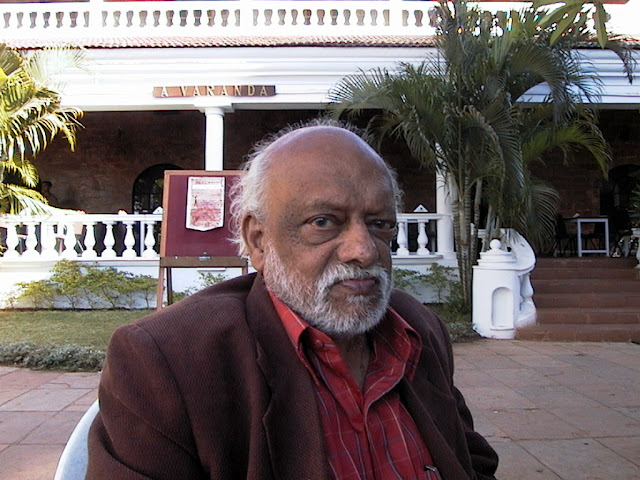F.N. Souza | Biography | Life | Artworks
 |
| F. N. Souza |
F.N. Souza has produced an imaginative body of figurative paintings that are independent of any movement and stamped with the artist’s individuality. His oeuvre depicts a highly personal subject matter which concentrates chiefly on sex and religion.
If sexuality has not been raised to a pitch of religious ecstasy, it, nevertheless, is a source of his strength as also his weakness. His works create a sense of morbid despair and aversion to life, with, however, an undertone of nostalgic compassion.
One may, in a way, compare his approach to the full-blooded vehemence of the contempt for the real world exhibited by Rouault, who “Flogs vice and castigates hypocrisy”.
Souza uses the language of art recklessly, particularly in his latest works, but in such a passionate manner as to create an impression as if he were fighting with himself. His art is, perhaps a search to calm himself.
His attempts to depict a certain type of feeling in visual terms have resulted in profound personal images evoking the claustrophobic conflict of man in our age. Souza’s depiction of tortured martyrdom conjures up a “vision of the son of God to the extent of identifying himself with him”.
He sees humans in a perpetual state of conflict and suffering. In the spirits of Frances Bacon, he has created personal variations of brutal power in contemporary life which he alternates with sexual depravity to “portray perverted pantomime of human relationship”.
His “Lovers” enact ceremonies that portray human needs and emotions on an elemental level. His insensate, plumpish figures are suggestive of an animality.
Souza has evolved a new conception of reality, by basing his forms on the principles of organic growth, together with certain conventions inherited from cubism, expressionism, abstractism.
His figures and faces pose a sense of strongness and an eerie life of their own, as in his “Seated Roman”.
And the hideous faces of the “Six Gentleman of our Time”. Some of his “Heads” which are treated with a geometric bias, or are supremely posed with a geometric or abstract mask-like structure, “Transfiguration” 1964 and “Head” 1983- reveal elements of critic art.
Books:















